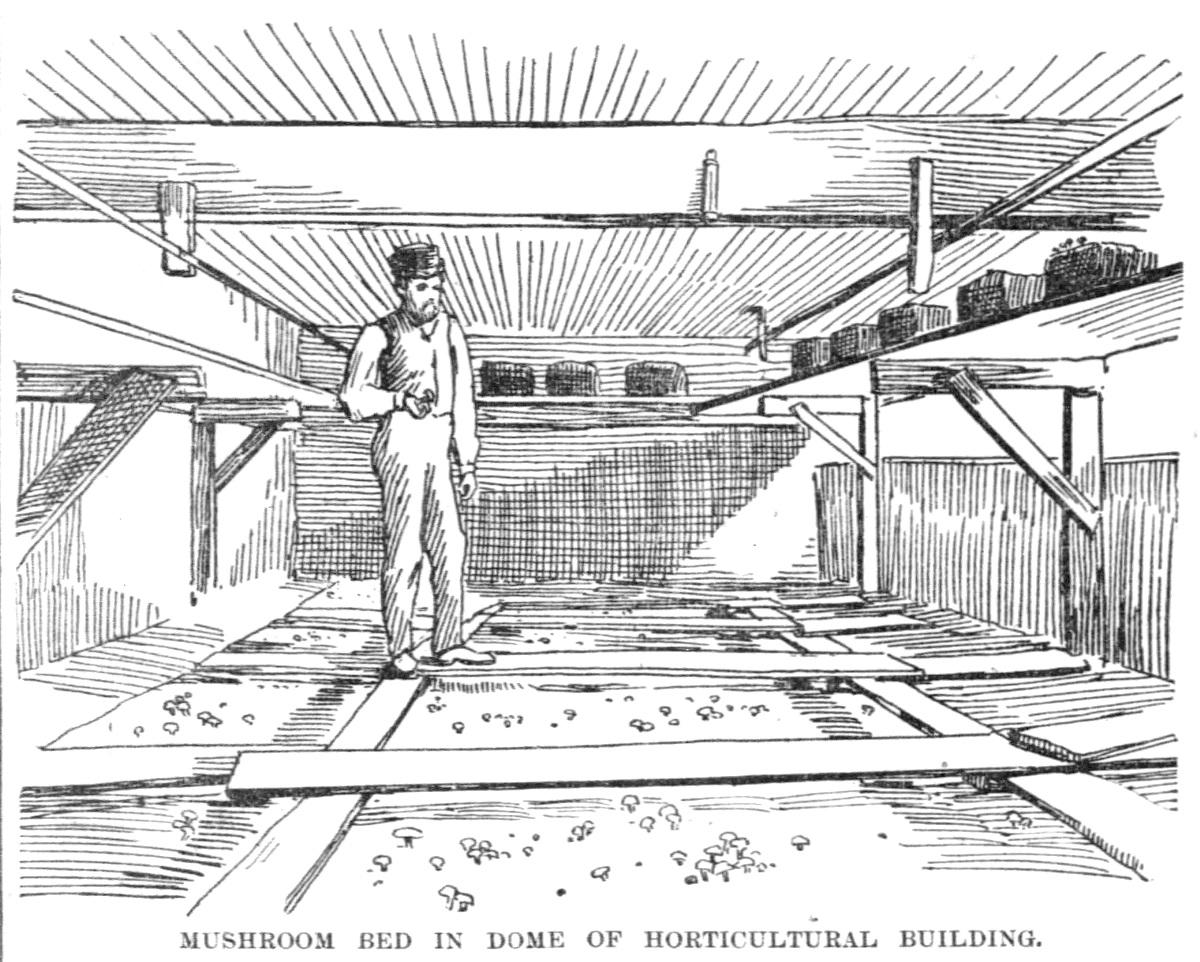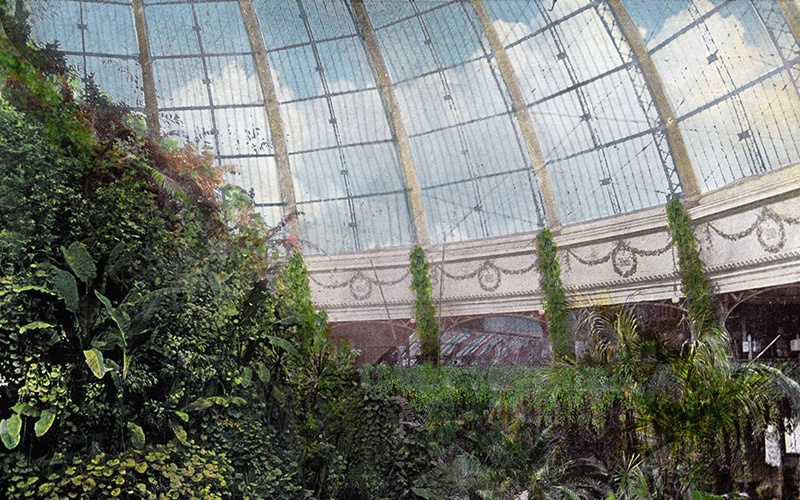Avert your eyes from a post-apocalyptic future in which fearsome fungi destroy civilization and instead look back at some marvelous mushrooms at the 1893 World’s Fair.

George Hiller with his mushroom bed in the dome gallery of the Horticultural Building at the 1893 World’s Fair. [Image from the Chicago Tribune Jan. 22, 1893.]
In a darkened room under the pyramid of exotic plants, which occupies the center of the dome of the Horticultural Building, there is an exhibit which is full of interest not only to gardeners and horticulturists but to lovers of fine feasting as well, for what epicure would not be interested in seeing how mushrooms grow. The old story about the growth of mushrooms in a night is a myth. They grow to best advantage in the night, but it takes more than one night for them to mature.
The bed at Jackson Park was made under the direction of John Thorpe Sept. 22. 1892. It was spawned Oct. 1, and the first dish of mushrooms was picked Nov. 1. Last Monday, nearly a bushel of mushrooms were picked from the bed, which is 10×20 feet in size. George Hiller, who has charge of it, is an old mushroom grower.
“Of the process of growing the fungi,” he says, “many book have been written, but the best way for a man to learn how is to go to work and find out for himself.” Any one may raise mushrooms in a cellar, but to raise them successfully in beds is an art. The spawn or germ of the fungi is invisible and for convenience is mixed with a compost of manure into cakes six or eight inches square and one and one-half inches thick. These cakes are broken up and a small portion put into larger cakes of compost, and when the mushrooms make their appearance as small white beads they are placed in beds. When this is done the chief requirement are darkness, an even temperature, moisture, and a few moments’ attention night and morning. The temperature for spawning is 97° and for the healthy growth of the fungus is 57°.
The “pyramid of exotic plants” under the dome of the Horticultural Building at the 1893 World’s Fair housed mushroom beds and later a Mammoth Crystal Cave attractions. [Image from Picturesque World’s Fair. W.B. Conkey, 1894; digitally enhanced.]
The dried fungi exhibit from New York State. [Image from Report of the Board of General Managers of the Exhibit of the State of New York at the World’s Columbian Exposition (James B. Lyon, 1894).]
Mushrooms and other edible and poisonous fungi also were exhibited in the U.S. Government Building [Image from Bancroft, Hubert Howe The Book of the Fair (The Bancroft Company, 1893).]
SOURCES
Bancroft, Hubert Howe The Book of the Fair. The Bancroft Company, 1893.
Johnson, Rossiter A History of the World’s Columbian Exposition Held in Chicago in 1893, Volume 3: Exhibits. D. Appleton and Co., 1897, p. 139.
“Mushrooms at the Exposition” Chicago Tribune Jan. 22, 1893, p. 11.
Report of the Board of General Managers of the Exhibit of the State of New York at the World’s Columbian Exposition. James B. Lyon, 1894.

